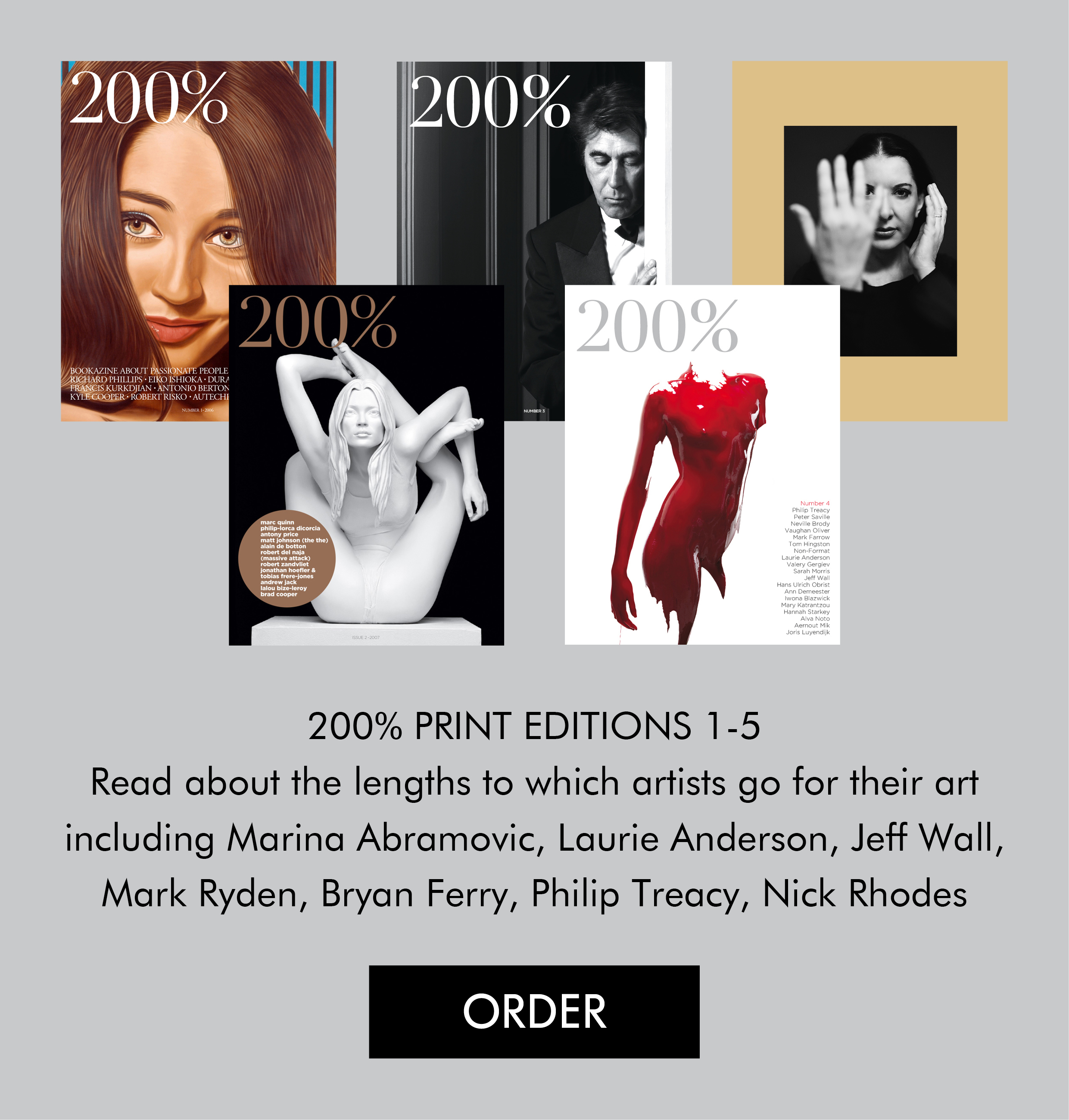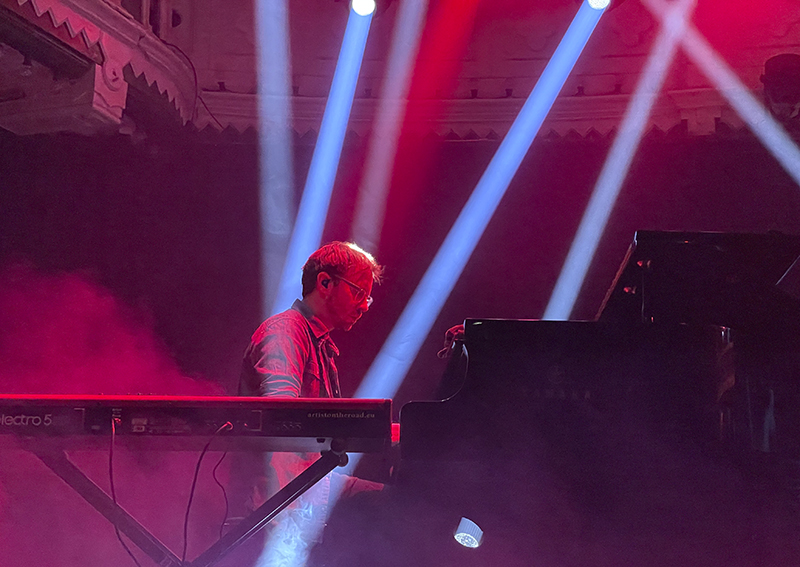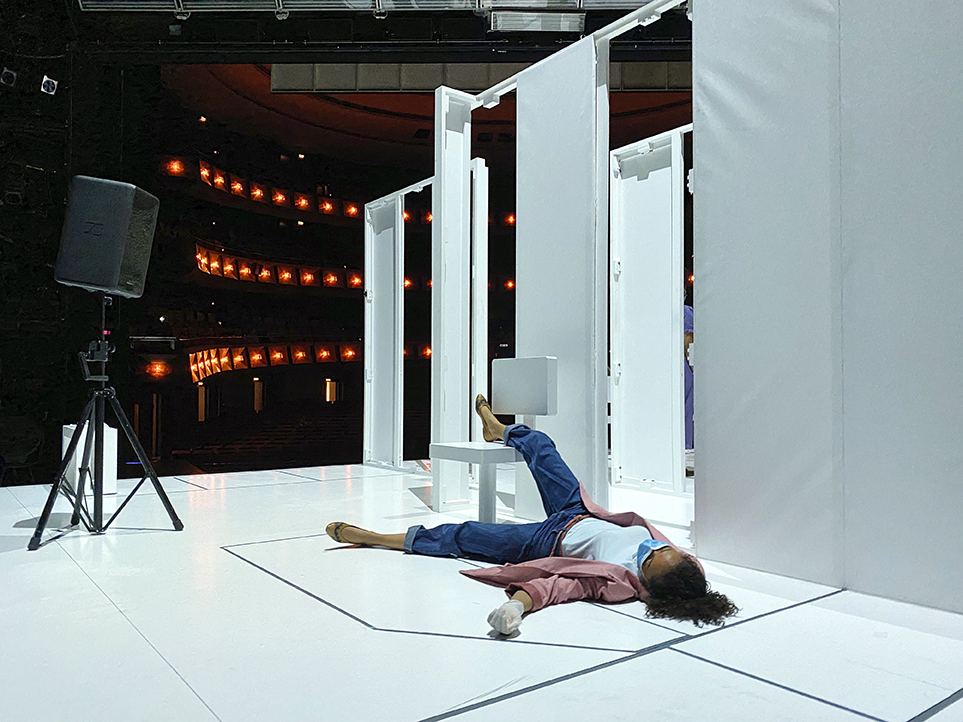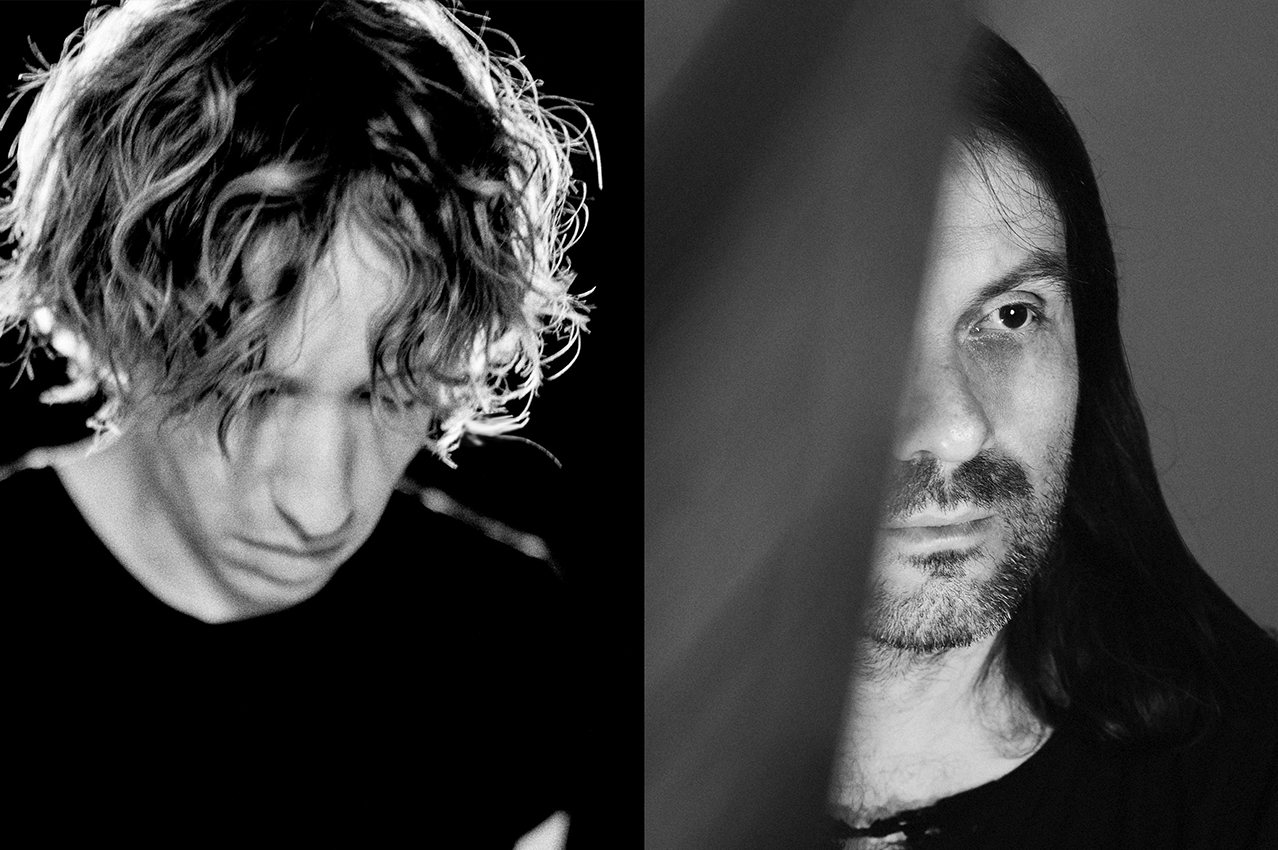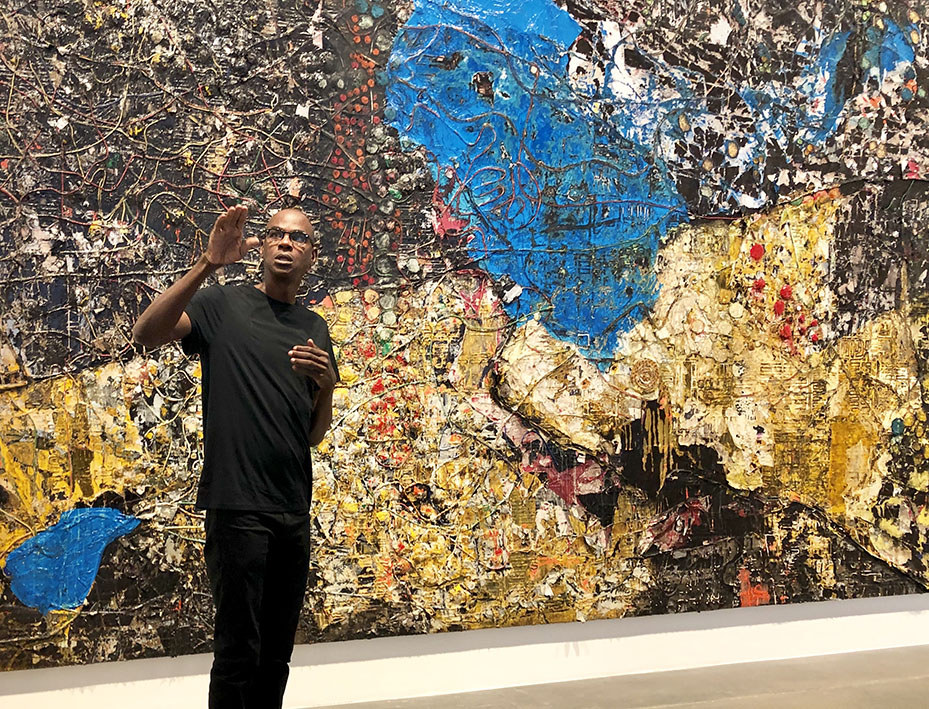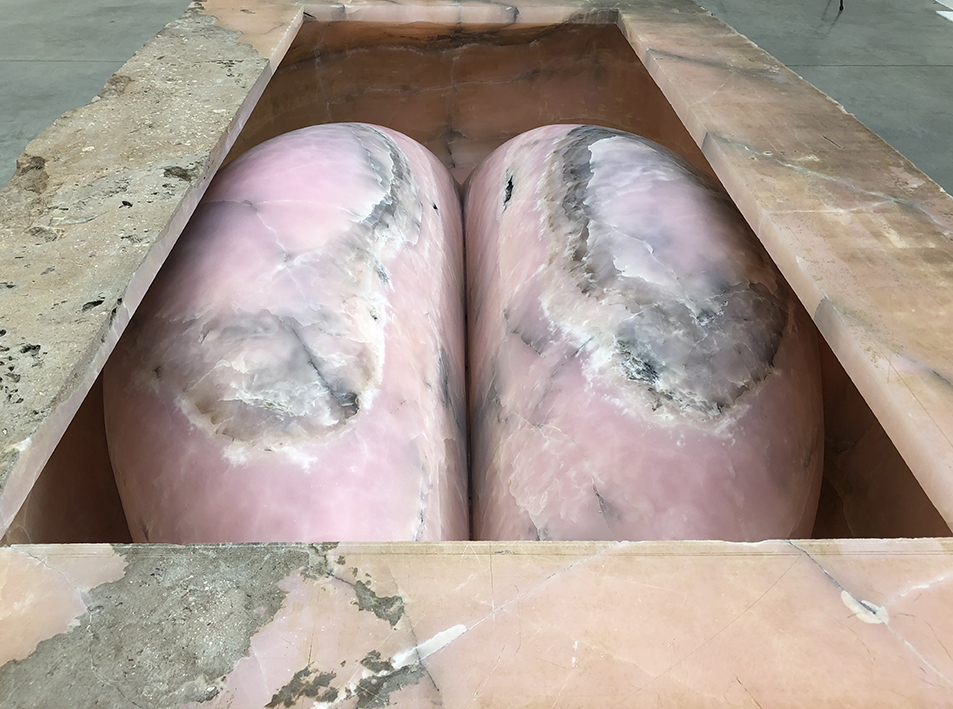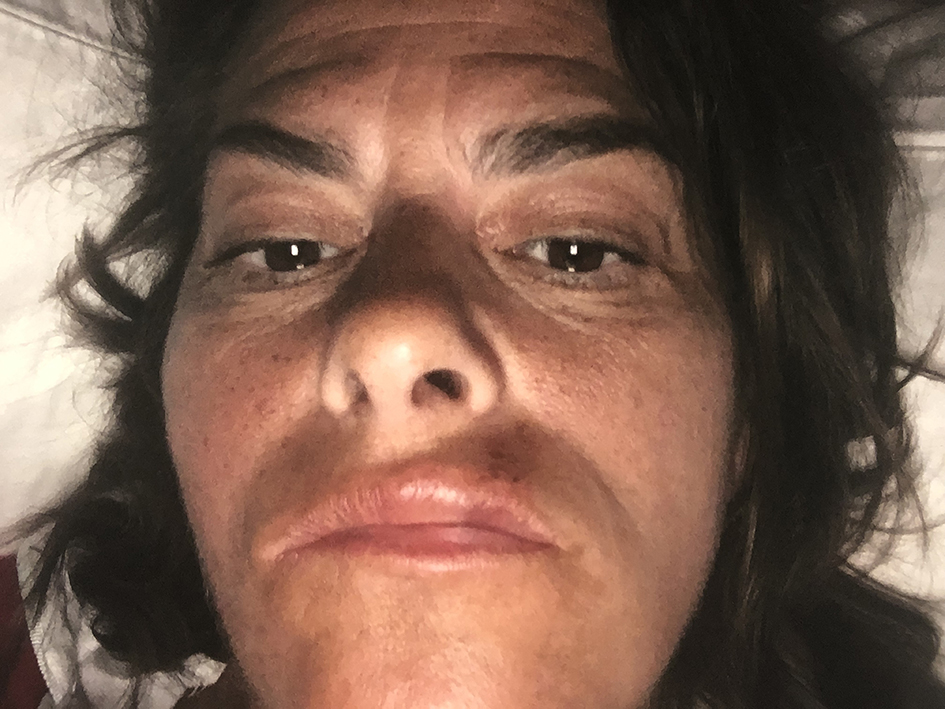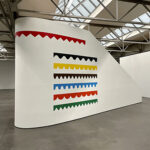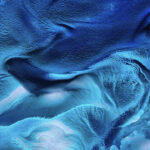 A moment of contemplation at the inaugural, well-attended, edition of the photography fair ‘Unseen’ in Amsterdam could be found at the stand of Flowers Gallery. The London-based gallery presented a mesmerizing series of serene nudes by the Israeli-born photographer Nadav Kander, which feature in his new book ‘Bodies. 6 Women. 1 Man’.
A moment of contemplation at the inaugural, well-attended, edition of the photography fair ‘Unseen’ in Amsterdam could be found at the stand of Flowers Gallery. The London-based gallery presented a mesmerizing series of serene nudes by the Israeli-born photographer Nadav Kander, which feature in his new book ‘Bodies. 6 Women. 1 Man’.
Over a period of 2,5 years, seven naked sitters were depicted by Kander in his studio, resulting in a body of work consisting of 30 pictures. Flowers exhibited three pictures of women whose bodies are painted white with dust that comes from marble sculptures and photographed on a black background. As the models are turned away from the camera or their faces are hidden by their arms, the attention is focused entirely on the shape of the body. Some of the bodies become beautifully abstract, like ‘Elizabeth with elbows hiding face’ where her body appears to become the shape of dough being kneaded for bread.
This picture makes one recall Lucian Freud’s famous painting of Sue Tilley. Kander admits that Freud subconsciously has been at the back of his mind. He admires how Freud painted humans and loves the painter’s brushstroke and how he succeeded to make human flesh come alive in his work.
Photographing the body as a sculptural form has been a subject that has occupied many photographers. ‘Earthly Bodies’ by Irving Penn is a collection of nudes where the American photographer captured bodies of curvaceous women with their faces not in the frame.
In his book ‘Some Women’, Robert Mapplethorpe, depicted their naked bodies like Greek classic sculptures and Bill Brandt made a series of nudes on the beachside and positioned the bodies of women in such an angle that they appear to be like stones.
For models and photographers nude photography can make them feel uncomfortable or perhaps even embarrassed. By turning the sitter away from the camera, to hide their face or to not make them look into the lens, may be a way to alleviate any feelings of shame. The model may feel less exposed and vulnerable at being naked in front of the camera and the photographer might feel less like a voyeur.
Though breasts and vaginas are completely exposed, with no faces identified, Kander’s pictures don’t become erotically charged. Also, the viewer doesn’t feel like a voyeur in staring at these naked bodies, which is inevitable, as you become entranced by the rapturous beauty that Kander has captured.
Whether Kander photographs Chinese people along the Yangtze river or Barack Obama and his staff for the New York Times, his signature is always present: utterly sophisticated, understated elegance and exquisitely tasteful. There is also an air of distance in his work that may be a reflection of Kander’s shy and introverted personality.
Kander attended the ‘Unseen’ fair for an interview on stage and made time to sat with us to discuss his new body of work, and his interest to create images that are slightly difficult to view, but simultaneously quite beautiful.
200%: How did your new book ‘Bodies. 6 Women. 1 Man’ originate?
Nadav Kander: I have often photographed nudes, but I don’t think I have ever been comfortable with what I have photographed as it’s usually too erotically charged. They fall in a genre of photography that I don’t really like or with which I would like to be associated. I have often pursued it, but I never found a way that I could photograph nude people that was satisfactory to me. I always loved the work of Lee Friedlander, André Kertész and Bill Brandt, particularly with their nude work, for their honesty and the way that they showed humanness in different ways without it being sexual.
 200%: How did you find a way to photograph nudes that you found satisfactory?
200%: How did you find a way to photograph nudes that you found satisfactory?
NK: I started photographing women in my studio and I had a reference point of the Renaissance. I was interested in the thinking of the fifteenth century of the way whiteness was associated with dignity and purity. We painted bodies white with dust that comes from marble sculptures, suspended in cream, like a make-up, whitening people and starting working with reference to effigies, to Ibn Tumart, to sculptures that have been used in churches.
That’s how it began, but I very quickly realised that it fitted much more into the way in which I always photographed. It took me quite a long time to realise that this whole Renaissance thing is actually a reference point and the context of fine art paining; it isn’t an affectation, but it is really just a beginning point. Really what I was doing was exactly the same thing that I had done since I started to photograph at the age of 20, which is to look for paradoxes, for opposites, for things that are slightly difficult to view, but simultaneously quite beautiful.
 200%: Can you explain what the work is about?
200%: Can you explain what the work is about?
NK: I think that it is about vulnerability, being exposed and yet covered and turned away. They bring up feelings in the viewer of truth that you which you can’t turn away, one’s dark side. You can’t have health without disease, you can’t have beauty without imperfection. I find the imperfection in beauty always more beautiful than just beauty.
I’ve always known that all my work is authentic to me, but it’s always very hard for me to articulate what it is about my work that makes it in a way always the same. Whether I go to China or do still life’s or do nudes I think I’m starting to realise – and I must be stupid as it took me a long time to realise – that it’s about being human. I find great solace in beauty, in pairing things down to the minimum. I think that there is no difference in the feeling I had when I was in China photographing a person in front of a big large bridge to doing these nudes. They don’t feel different to me. They’re both quite ‘naked’, they simultaneously show beauty and ugliness and conjure up that feeling that you can’t turn away from the truth.
200%: There is also an abstraction in this body of work, for instance, ‘Elizabeth with elbows hiding face’. Did you consciously look for abstraction?
NK: Not particularly. Maybe subconsciously. I don’t know if I find them that abstract. I’m finding a balance between being there and not being there, by being turned away, by being covered up in paint. I’m trying to find that slight uncomfortable place. Perhaps the abstraction aides to it.
200%: In your work I found something understated and cool, and also something distant and introvert. Is that a reflection of yourself?
NK: Yes, I think it is. I think what you pick up on describes me quite well. I do try to be honest with my work. There is no point doing it if I’m pretending. I hate that part of the art world that is full of pretence. It’s not interesting at all to me. I always said what I love in the work is seeing the person behind the lens, seeing the person behind the painting. Freud and Picasso are great examples of that.
 200%: You started your career in commercial and advertising photography and produced very successful campaigns for Nike and Levi’s. Coming from this background, do you experience that the art world finds it hard to accept your work as art?
200%: You started your career in commercial and advertising photography and produced very successful campaigns for Nike and Levi’s. Coming from this background, do you experience that the art world finds it hard to accept your work as art?
NK: I think there might be people that see me as a person that does commercial work as a negative but I think it’s less and less. People are realising it should be the work that counts. The question that people should ask: is the work authentic or not, not if it’s commercial or not? If they look to the work displayed on the wall and they feel it is authentic to the artist than it’s good art. All I can say is that I know that anything I exhibit is really authentic to me and that’s why I’m comfortable with it. I often can’t articulate what it is, but I know when it’s me. That’s the bottom line.
I still do commercial work and I get a real buzz out of collaborating with people. I enjoy the potency of working with other people and coming together to produce a good result that a billion people might see in three months time. I don’t have a problem with it, if other people do, than they do. I find most of the commercial work that I’ve done has great integrity and I don’t hide behind it at all.
Interview written and conducted by Thierry Somers. All images by Nadav Kander: ‘Elizabeth with elbows hiding face’, 2012; ‘Audrey with toes and wrist bent’, 2011; Isley standing’, 2011.
‘Bodies. 6 Women. 1 Man’ by Nadav Kander will open 10th January 2013, Flowers Gallery, 21 Cork Street, London
http://www.flowersgallery.com/exhibitions/flowers/nadav-kander-london/#.UNiQPbcgGc0
‘Bodies. 6 Women. 1 Man’ by Nadav Kander, published by Hatje Cantz

